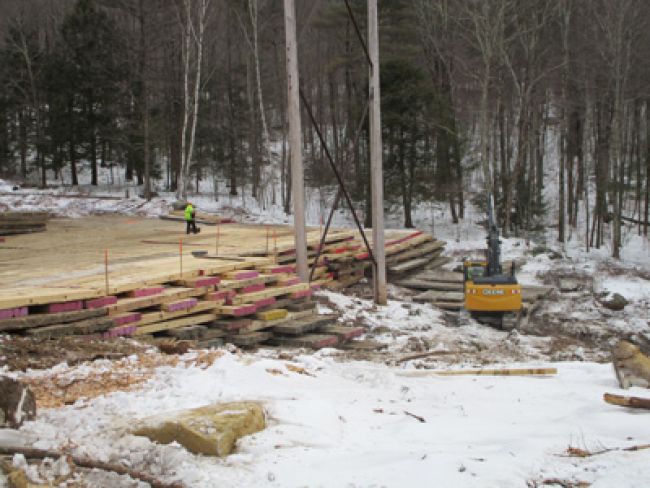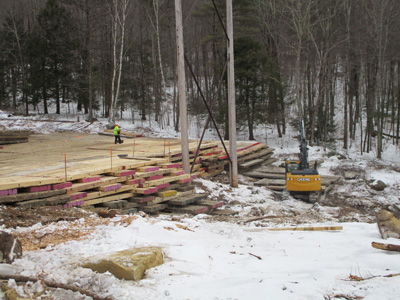
Overcoming Conflict on the Right-of-Way

A news helicopter circled overhead as the two ambulances left the job site. The deputy sheriff looked at the superintendent and said, “Tell me again, how did this happen?” The superintendent removed his safety glasses with a sigh as he surveyed the devastation left behind by the 345-kV contact. “Well, we had to set up for work directly under these lines because some local environmentalists wanted the wildflowers protected,” he said. “So, we did what we were asked. If you notice over there, those flowers are still looking beautiful, but it seems that the now-deceased landowner still didn’t like us being here, so he ran onto the right-of-way and tried to climb up onto the boom truck to stop our work. This must have caught our groundhand off guard, because instead of just stopping the work and notifying his supervisor, he attempted to intercept the man. All this commotion distracted the operator, causing him to contact the line. Once that happened, 345 kilovolts of electricity killed the landowner instantly, and our ground worker was severely shocked by what we call step potential.”
Although the preceding paragraph is an extreme worst-case example of how right-of-way (ROW) distractions and conflicts can impact our job sites, it’s not unrealistic. In this article, we will look at how members of the public and our own workers can create distractions and conflicts that jeopardize our ability to do our jobs well, and we will also consider safe ways to handle these types of distractions and conflict.
Conflict with Members of the Public
When it comes to ROW work, members of the public generally fall into three categories:
- Adjacent landowners are most often interested in minimizing the impact to the land and the disturbance to their lives. Being courteous and considerate goes a long way with them.
- Motorists want to move through your traffic control zone so they can get to their destinations with minimal impact to their schedules. Using clear communication, such as appropriate road signs and flagging techniques, helps to reduce confusion and frustration.
- Other interested parties take many forms, from those who are accustomed to hiking, running or biking on the ROW, to those who simply may be curious about what’s going on. To help reduce traffic, place warning signs at trailheads and other access points to let unsuspecting members of the public know about the construction hazards.
Members of the public who enter our work sites often create hazards for themselves, workers, the property, and the project schedule and/or budget in the following ways:
- They put themselves in harm’s way. For example, they run the risk of being struck by moving equipment or dropped objects.
- They create distractions. When workers are always on the lookout for unauthorized site visitors, it steals focus and contributes to mistakes that can lead to injuries, damages and outage incidents.
- They can damage property. Members of the public, especially protestors, sometimes damage our equipment, vehicles and materials to slow or halt projects.
- They might threaten violence. On rare occasions, members of the public make violent threats to intimidate workers and slow projects.
Preventing and Dealing with Public Conflict
As my grandmother used to say, “An ounce of prevention is worth a pound of cure.” And there are a couple things we can do to help prevent conflict with members of the public before it begins:
- Keep the utility’s community relations representatives informed of work locations and hours of operations, especially if you’re going to have to extend the project’s authorized working hours.
- As noted earlier, place warning signs at ROW entrances to warn the public. This is particularly important if the ROW cuts through or becomes part of a trail.
If conflict with a member of the public does arise, regardless of who they are or why they’re there, the following steps will help facilitate a safe and productive resolution:
- Stop work in the area. This will eliminate many of the hazards that could lead to a news helicopter circling overhead while a project investigation team attempts to figure out how a tragedy unfolded.
- Respectfully speak to the person and let them know how their presence is endangering them and the workers on the ROW.
- Contact the utility’s community relations group so they can resolve or follow up on the conflict.
- Return to work when it’s safe to do so.
In the rare case of threats of violence, there are a couple more considerations. First, advise the person or people making the threats that you are securing the work and leaving the job site. In addition, ask the client to contact the police, and understand that police presence may be required to safely return to work.
Worker-to-Worker Conflict
Although members of the public can create distractions and conflict on the ROW, the most common conflict-related distractions arise from workers with unsettled issues. An unsettled worker conflict can:
- Steal our thoughts and distract us as we repeatedly replay the details of the issues over and over in our mind. This can lead us to a mental and emotional place where we become an operationally inefficient hazard to ourselves and those around us.
- Create a bad work environment that causes good employees to leave, leading to two problems. First, those who remain are likely to recruit even more miserable workers to replace the good-natured ones, and second, the new, miserable workers will have an operational learning curve that reduces team effectiveness.
- Lead to physical violence that crushes morale, kills efficiency and stains the company’s reputation.
All of these scenarios are avoidable if we’re willing to manage conflict quickly and in a way that leads to the best possible outcome.
Identifying and Preventing Worker Conflict
In my experience, worker conflict usually is rooted in three interrelated issues: poor communication, frustration, and differences in personalities and values.
Poor communication is the foundation of many types of problems, including conflict. Indicators of communication issues are heard around the job site in many forms. For example, you might hear someone say, “I thought you wanted this” or “I told you to do it like this, not that” or “No one told me the plan had changed.” Poor communication can be prevented by being clear and specific, as well as checking for understanding by asking questions before beginning work and observing and correcting workers throughout the day if and when they get confused.
If effective communication can’t be established, people often feel frustrated, which can bloom into anger or apathy. On the job site, frustration might sound like, “Hey, I needed that!” because production expectations didn’t match the resources available, or perhaps you might hear, “There’s no way we can do that, but the boss won’t listen to me.” Frustration can even take the form of negative self-talk, such as, “I just expect more of myself.” The key to preventing these problems is to set realistic expectations for production and with people. If there isn’t enough time, people, equipment or materials, acknowledge that fact and adjust the goals for the day. Being realistic with yourself and others will eliminate the pressure that can lead to worker conflict.
Differences in personalities and values are something that we must anticipate, embrace and work with – not against. Sometimes frustration that hasn’t been dealt with turns personal and differences in personalities and values come under attack. This might sound something like, “She’s always yelling,” “He’s too sensitive,” “He just cares about getting home to his family” or “She’s just waiting for it to be 5 p.m. somewhere.” There are many more ways that frustrated workers split teams into factions and, in doing so, decrease operational efficiency, which further aggravates the frustration issues. To prevent this, consider adopting the following practices:
- Accept the fact that you and your co-workers are a family, and every family has that “Cousin Eddie” (sorry if your name is Eddie) that we need to deal with to succeed.
- Filter out words and tones in your mind to better understand why the person is acting the way they are.
- Put people with similar personalities together when possible.
- Get rid of miserable people – their attitude kills morale and efficiency and spreads like cancer.
Handling Worker Conflict on the Job Site
OK, despite your best intentions, it got heated on the job site earlier today – now what? There are some necessary steps that need to be taken, including the following:
- Stop work in the affected area. This will eliminate many of the hazards that might be waiting to strike while people are in conflict.
- Make time for the employees to take a breath and calm down. They may need to step away for a short time to refocus.
- Clarify expectations for the work as well as employee attitudes and relationships.
- Focus on the solution, not the problem.
- Develop a plan to move forward. This might look like resetting goals for the day, rearranging the team, or maybe even calling it a day and picking things back up tomorrow.
- Cut out cancerous attitudes that are negatively affecting production and safety.
Summary
Part of our role as utility workers is working with and around others to get the job done. During the course of that work, we might run across an angry member of the public or come face to face with a frustrated co-worker. In fact, sometimes we might be that frustrated co-worker. We can’t help the fact that we are human and therefore susceptible to being imperfect and emotional. What we can do is work toward greater understanding about why conflict occurs and then use the tools we’ve been given to correct those situations so that our work gets done both safely and well.
About the Author: Jesse Hardy, CSP, CET, CUSP, is vice president of HSE for Supreme Industries, a Harwinton, Conn.-based contractor that specializes in right-of-way clearing, building access roads and drilling.

